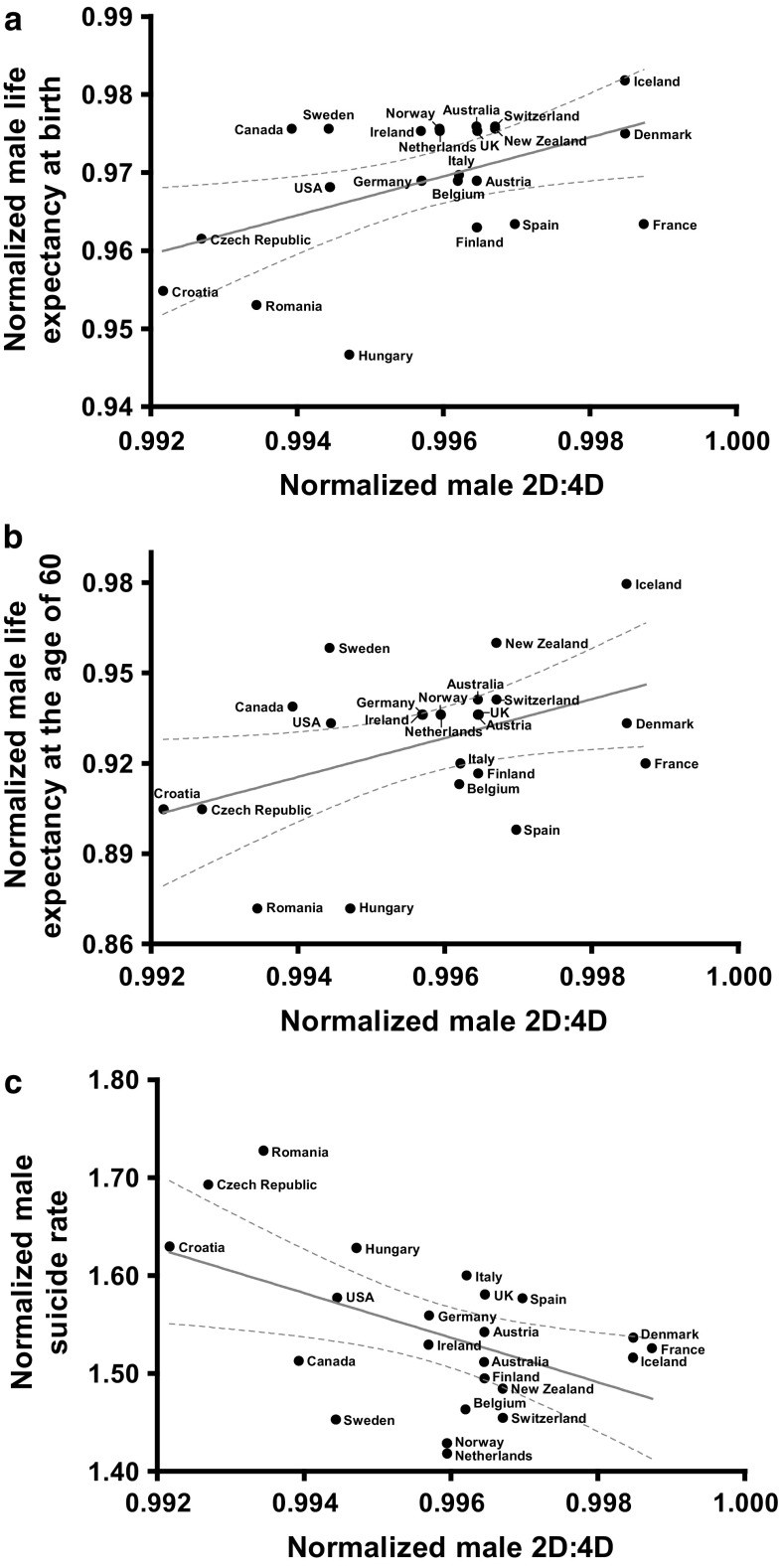Fig. 1.
Normalized male 2D:4D values correlate positively with normalized male life expectancies at birth (n = 23, r = 0.46, p = 0.029; Fig. 1a) and at the age of 60 (n = 23, r = 0.44, p = 0.038; Fig. 1b) and negatively with normalized male age-standardized suicide rates (n = 23, r = − 0.49, p = 0.017; Fig. 1c). The analyzed variables were normalized to their national means (= male value divided by the mean of the male and female values), i.e., in countries with lower (prenatally more androgenized) national male 2D:4D values (divided by the national mean of the male and female values), we found lower male life expectancies at birth and at the age of 60 (divided by the national mean of the male and female values) and higher male age-standardized suicide rates (divided by the national mean of the male and female values). These cross-national associations indicate that lower 2D:4D ratios might sex-specifically be related to reduced life expectancy and increased risk for suicide at individual levels. For national sex-specific right- and left-hand 2D:4D values, see Table 1 in Manning et al. (2014); dotted lines represent the 95% confidence intervals of the best-fit from a linear regression analysis

